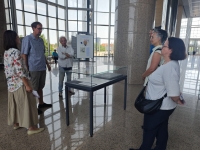To support the exhibition’s organizers and its visitors in discovering Supek’s rich legacy, we organized a guided tour led by the exhibition’s authors: museum advisor Ana Filep and senior curator Petra Braun from the Croatian History Museum, senior research associate Dr. Nikola Biliškov from the Ruđer Bošković Institute, and the creator of the graphic portfolio, academic painter, sculptor, printmaker, and illustrator Svjetlan Junaković. The exhibition’s title is taken from one of Supek’s introspective quotes, extracted from a conversation with Supek first published in Surviving despite (2015), in which he resignedly notes the failure of his efforts to build a fairer world. However, the exhibition itself offers a different interpretation: that ideas, if they survive, are never in vain, and his legacy continues to inspire new generations.
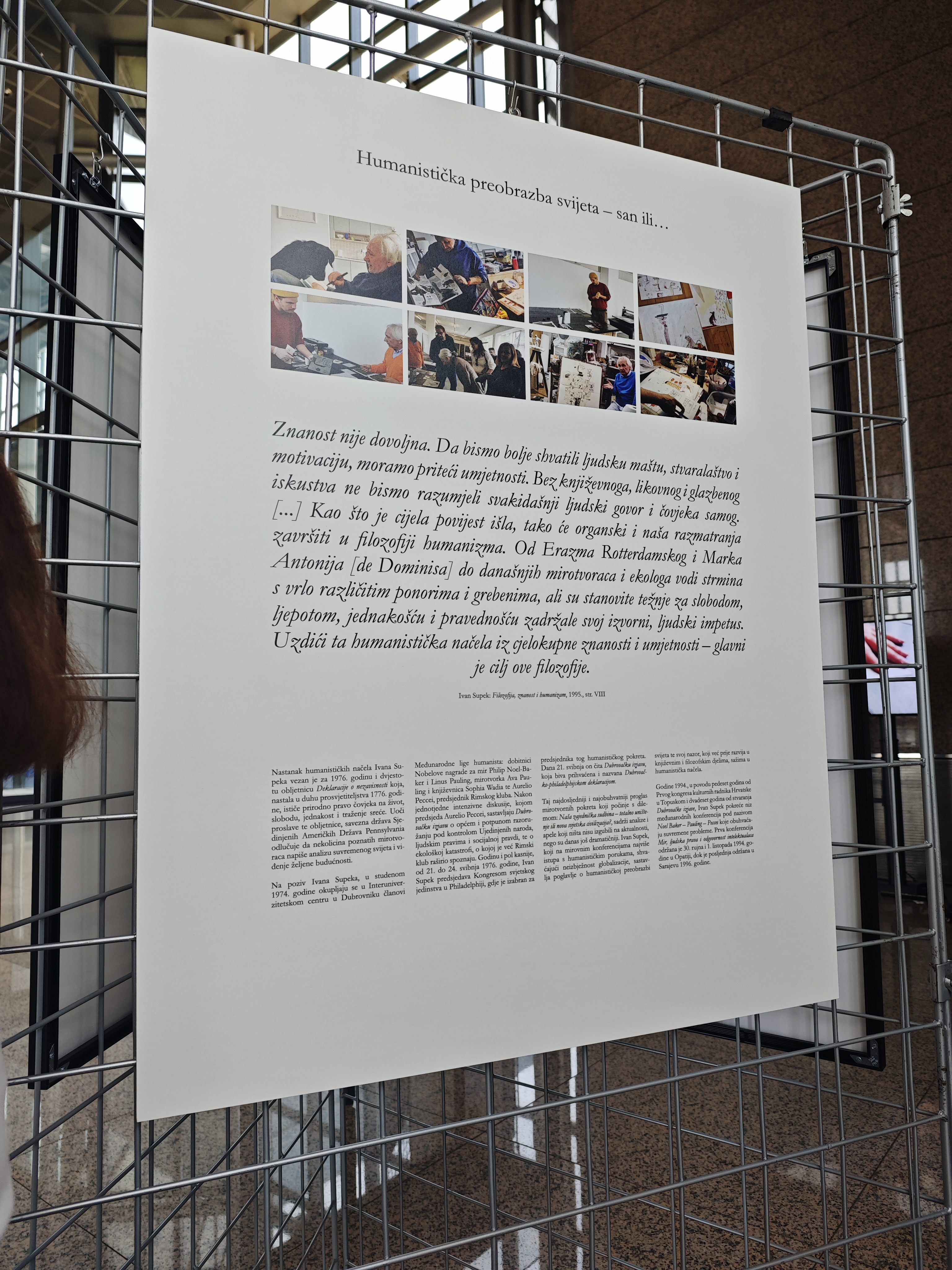
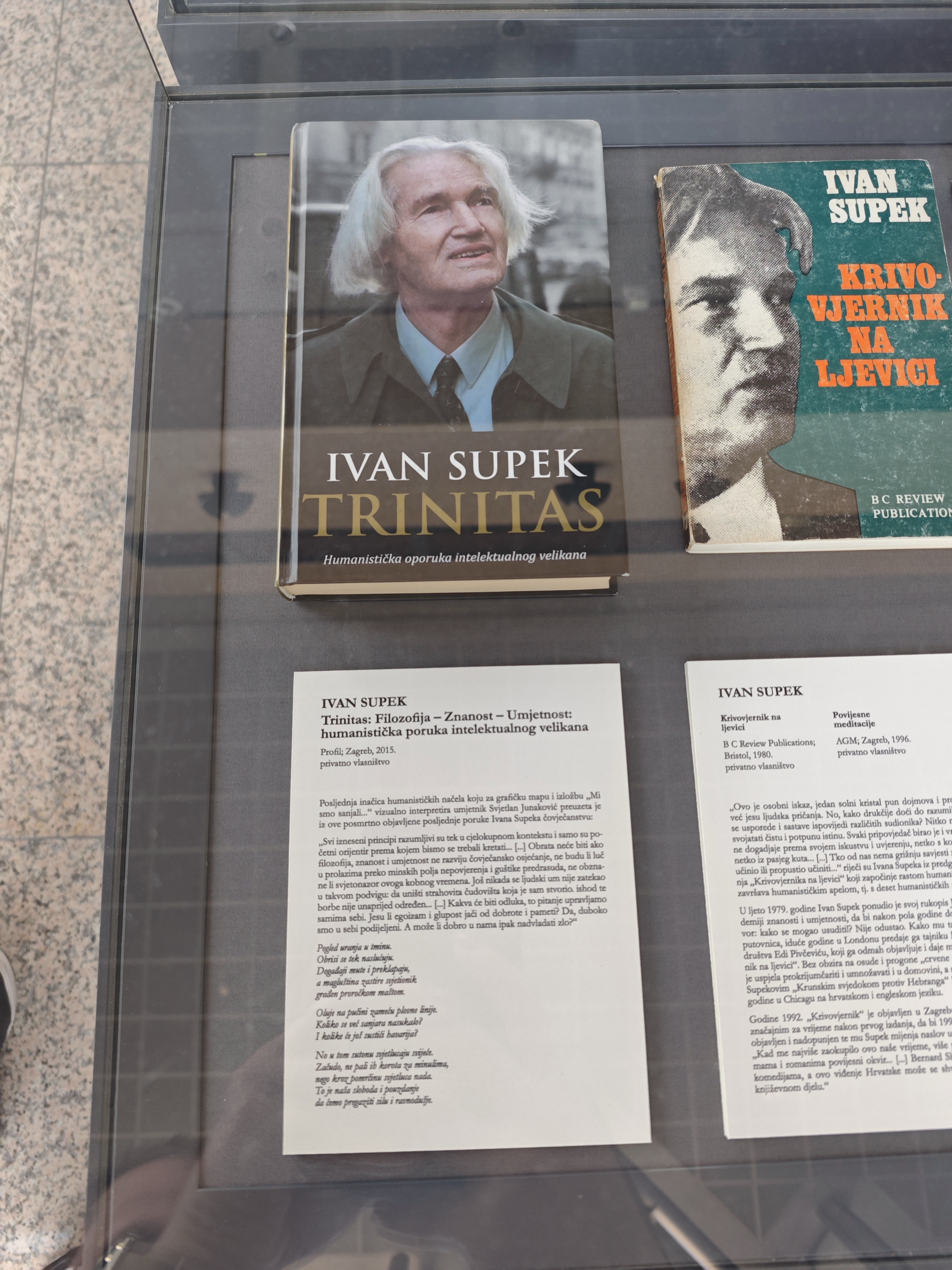
Supek’s Inspiration, Moral Vision, and Contribution to Croatian Science
Supek’s work was strongly influenced by Marko Antun de Dominis, a Renaissance scientist and humanist. Dominis’s fight for scientific truth and personal conscience deeply resonated with Supek, who, inspired by his life, wrote the novel Heretic in 1969, portraying Dominis as a symbol of intellectual courage and moral responsibility. Through symposia, monuments, and symbolic gestures — such as his portrait on the rector’s chain at the University of Zagreb — Supek restored Dominis to collective memory, emphasizing the importance of free thought and scientific bravery. The medal on the rector’s chain was created in 1974 by sculptor Kosta Angeli Radovani, who soon after also made a bust of Marko Antun de Dominis, placed in front of the Dominis Palace on Rab.
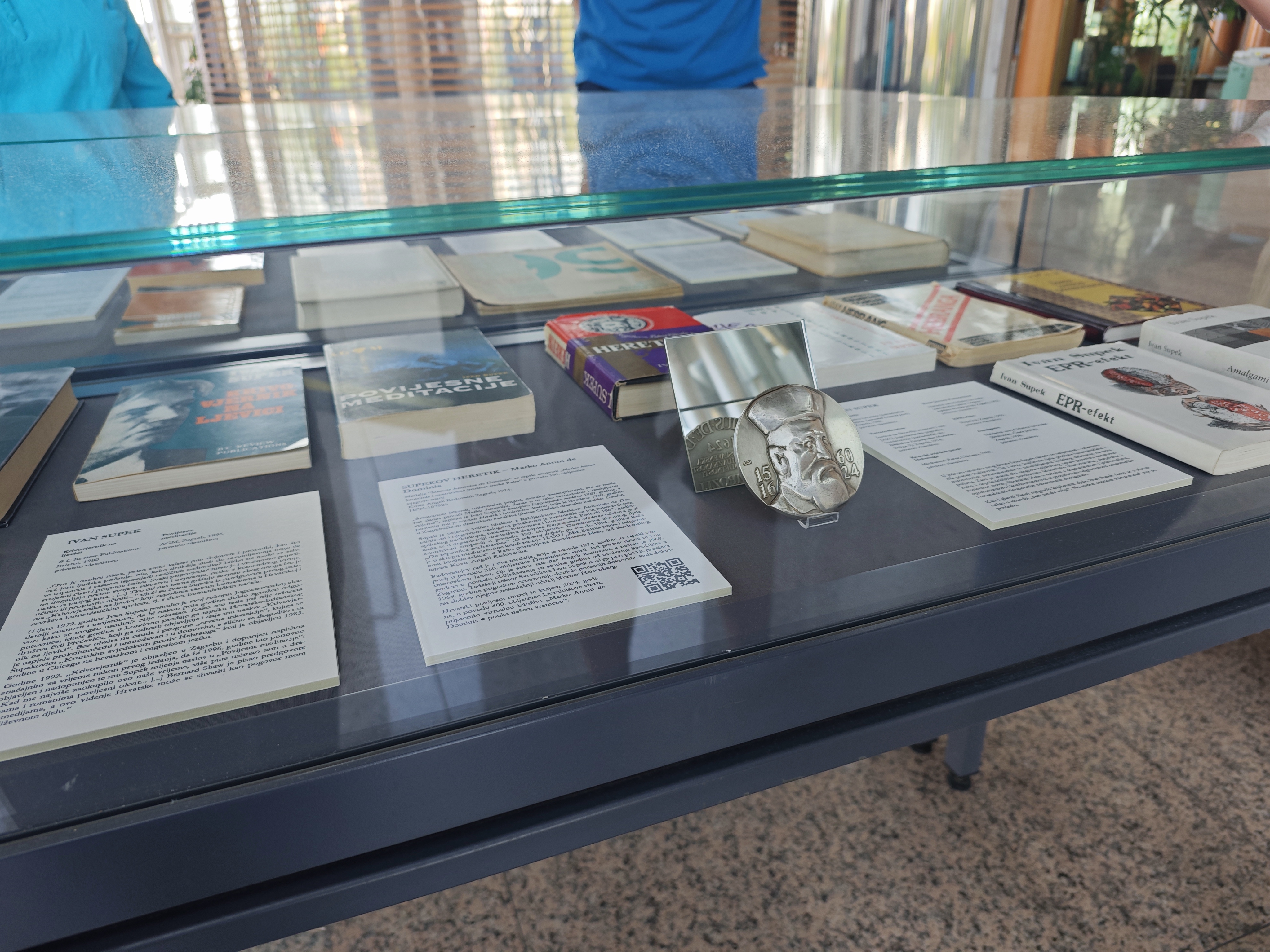
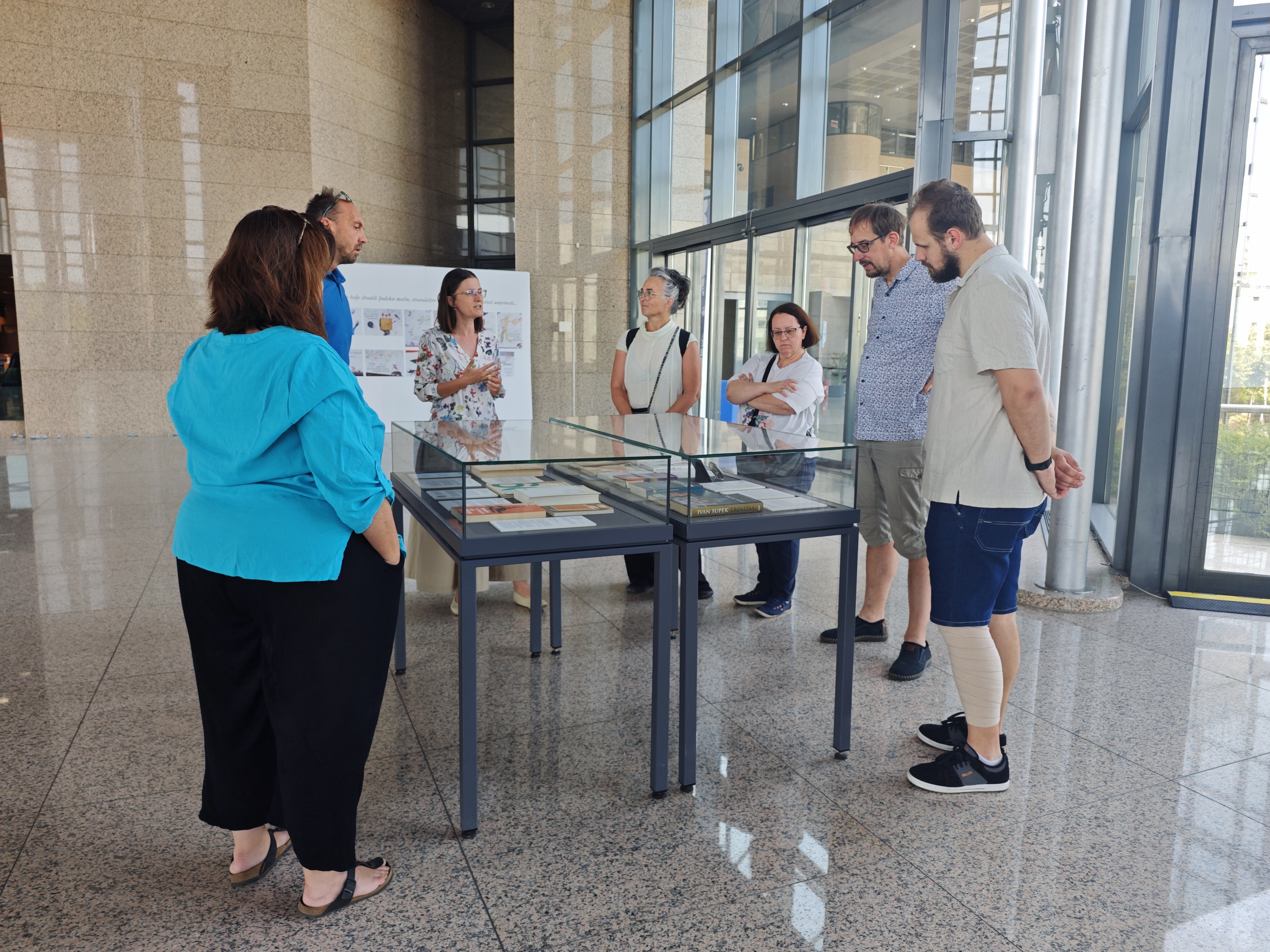
As early as 1944, as a young anti-fascist, Supek delivered a talk titled “Science and Society” at the First Congress of Cultural Workers in Topusko, where he was the first globally to publicly address the threat of nuclear weapons. After the war, due to his opposition to the militarization of science, he was politically marginalized but continued to tirelessly advocate for peace. In both his literary and scientific work, he paid special attention to the responsibility of scientists—a concept now recognized as research integrity and responsible research and innovation (RRI). The first version of his humanist principles, which form the basis of the exhibition, was developed as part of the Dubrovnik-Philadelphia Declaration on building and preserving peace and security in the world. The declaration was presented in 1976 at the Congress of World Unity in Philadelphia, and the principles were published in the journal Encyclopaedia moderna. In their final form, the principles were compiled in his posthumously published book Trinitas. Supek emphasized that these principles are always open to interpretation and development, but interestingly, their core has changed little since the original formulation.
Alongside his ethical reflections, Supek was a key figure in the development of theoretical physics in Croatia — he founded the Seminar for Theoretical Physics in Zagreb, which laid the intellectual groundwork for the establishment of the Ruđer Bošković Institute. He was an assistant to German physicist Werner Heisenberg, a professor at the Faculty of Science in Zagreb, a member of the CERN Council, and the founder of numerous scientific and humanistic initiatives. Because of his outspoken opposition to involving the Ruđer Bošković Institute in nuclear weapons development, Supek was soon removed from the Institute — demonstrating his uncompromising commitment to ethics in science. Nevertheless, he continued his work by founding an interdisciplinary journal Encyclopaedia moderna and launching new scientific institutions.
The First Artistic Interpretation of Supek’s Principles
One of the exhibition’s highlights is a graphic portfolio, created using the etching technique, conceived by academic artist Svjetlan Junaković according to Supek’s principles. Junaković — himself mentored by Radovani — sought to present a personal interpretation of each principle, consciously avoiding literal illustration. Through ten individual prints, the artist invites us to personally engage with ideas that are still seeking realization, and by connecting them, Junaković creates a unique whole — a large visual representation symbolizing the life and work of Ivan Supek. Alongside the graphic portfolio, equally significant are the artists illustrations of the humanist principles made as posters which were, during the exhibiton, placed all around Zagreb.
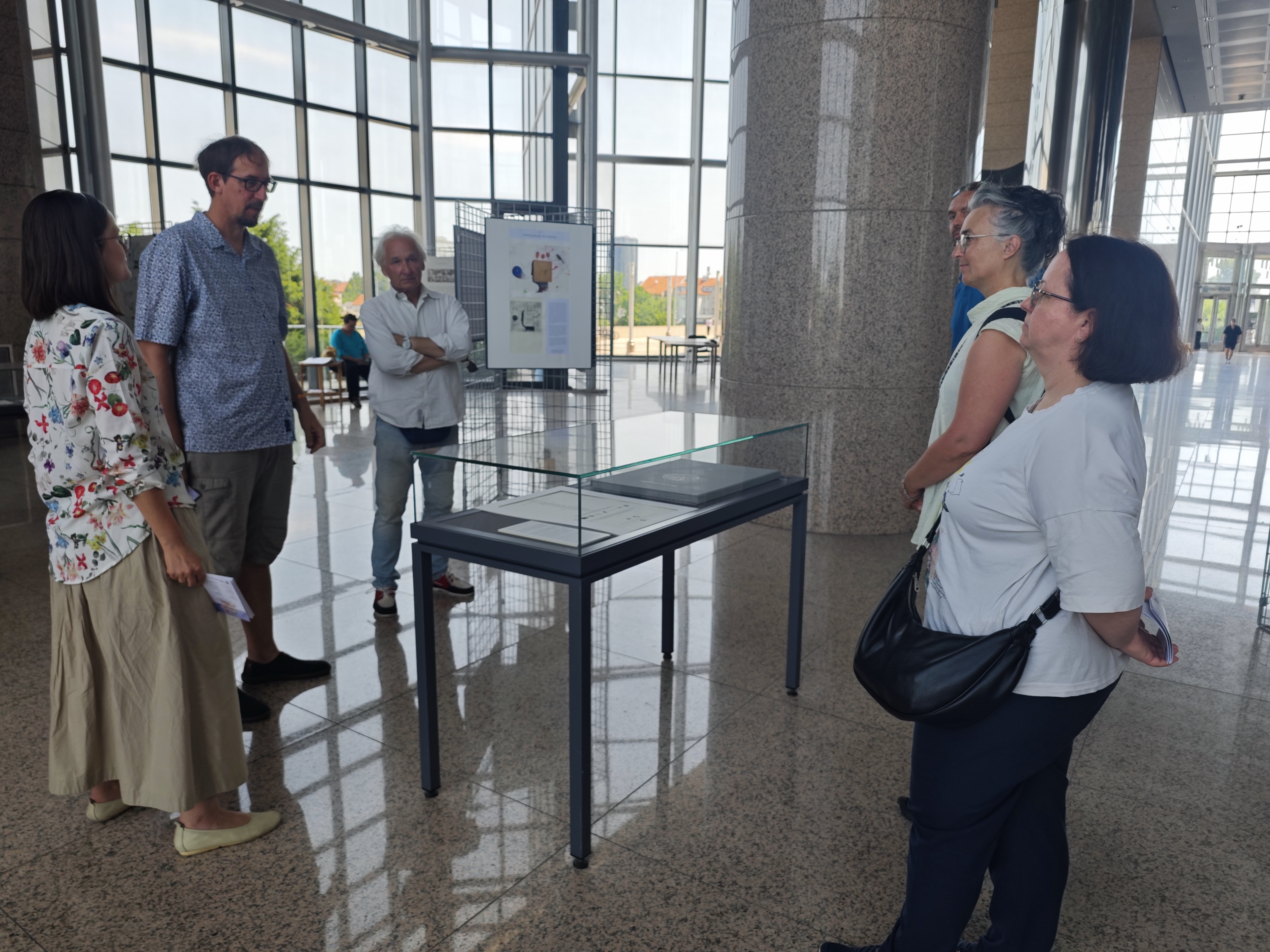

We are proud to note that the textual interpretation of these principles was written by our Nikola Biliškov, who presented the concept of humanist principles to visitors in a creative, playful, and inspiring way.
The exhibition “We dreamed of…” is not only a tribute to a great mind, but also an open invitation for all of us to keep dreaming—and to act. We invite you to visit and discover why Supek’s messages may be more relevant today than ever.
Those interested in the book Surviving despite, a collection of works dedicated to Supek on the occassion of his 100th birthday, can contact Nikola Biliškov. The exhibition catalogue will be published soon, and until then, more information can be found on the invitation from the Croatian History Museum.

